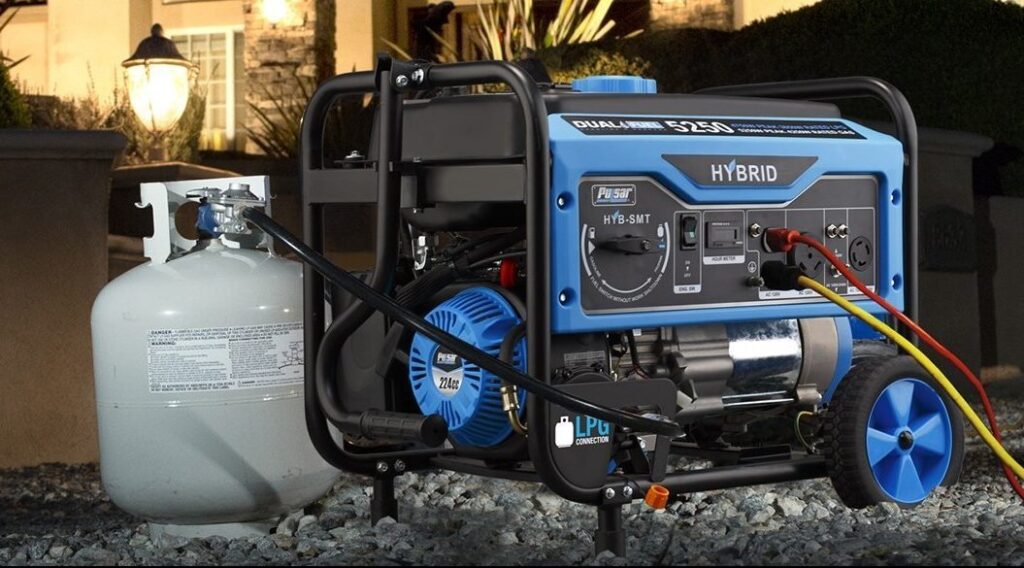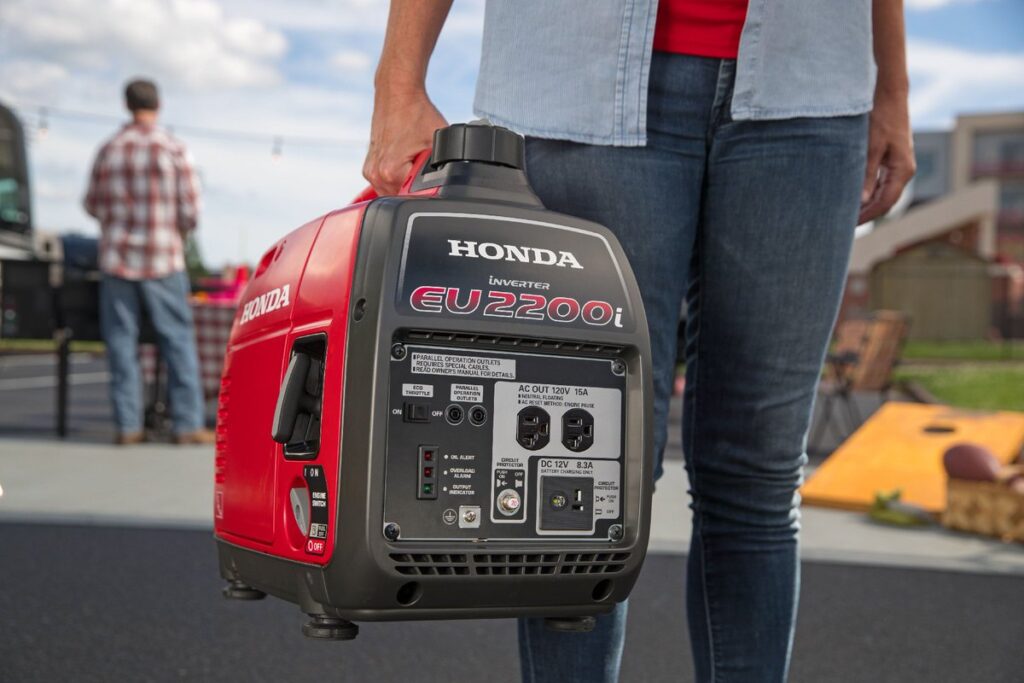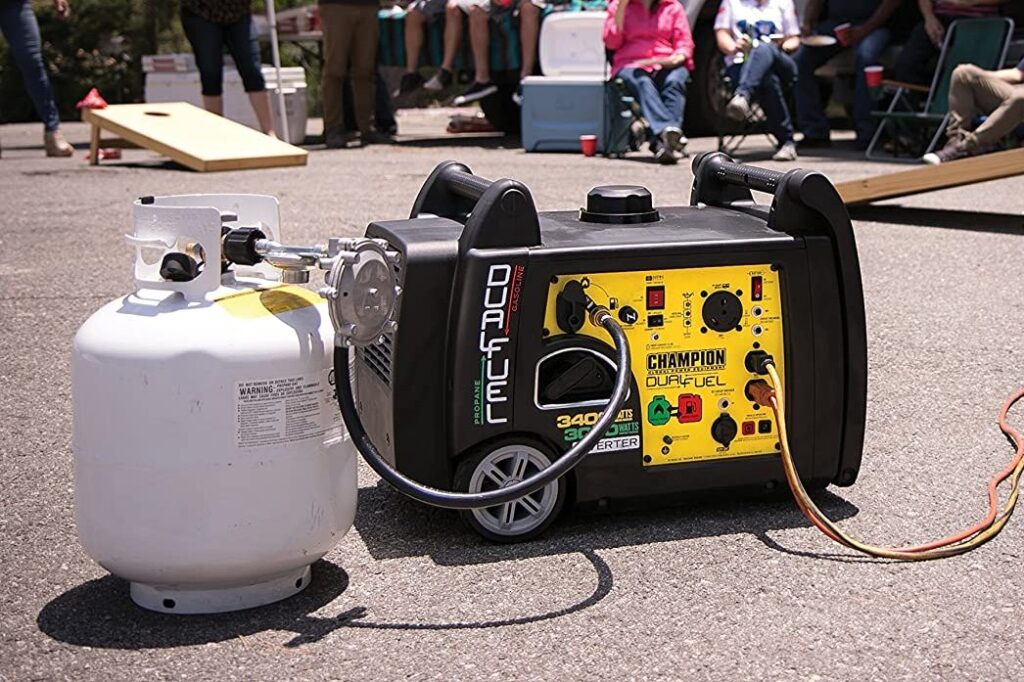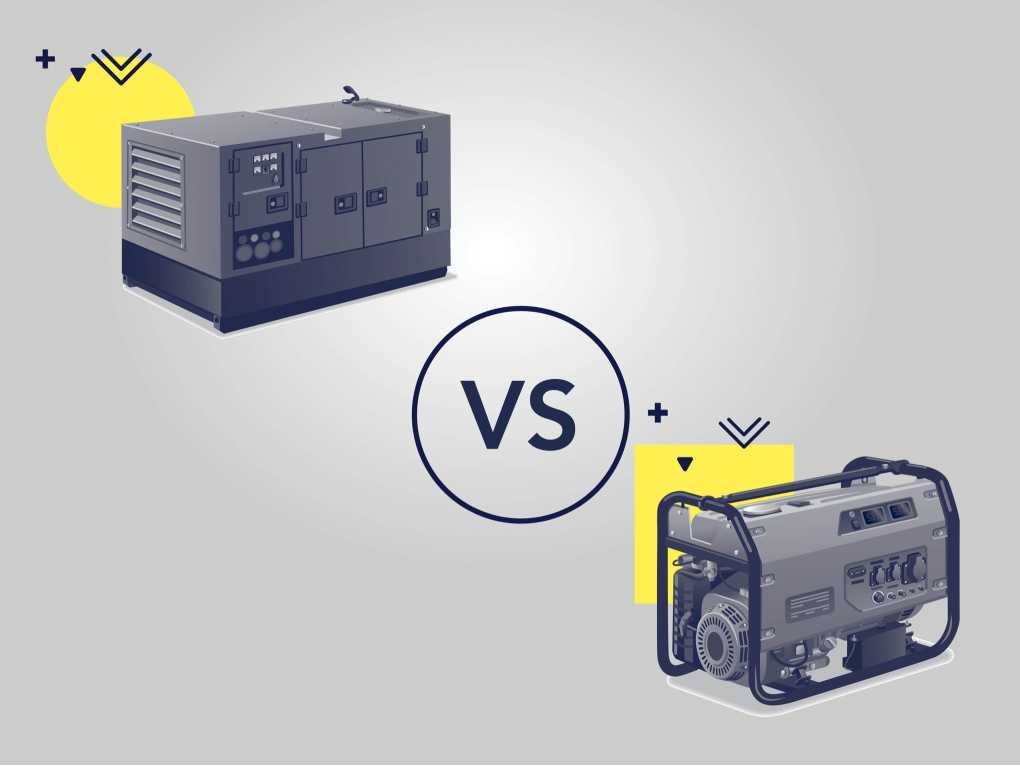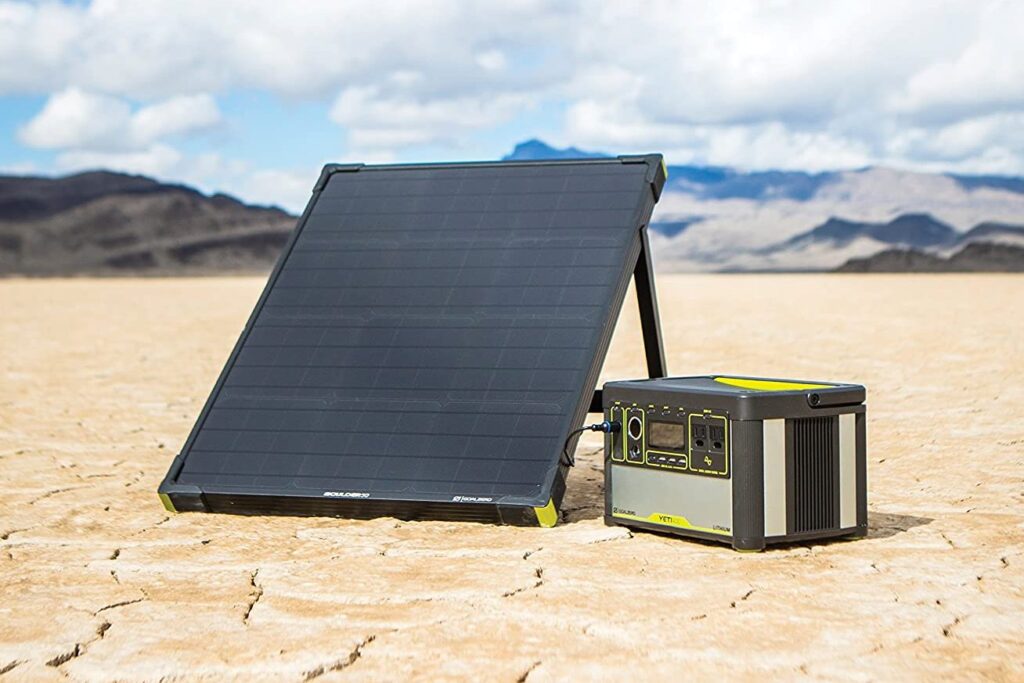Running a food truck requires a lot of electrical power, but it’s important that your power source be just as portable as the rest of your kitchen. Finding the best generator for a food truck can allow you to reliably power your kitchen for as long as you have customers while keeping your entire setup mobile.
In order to help you find the best generator for your food trailer operation, we considered a number of features that are important to these machines. We looked at whether they run on gasoline or propane, since this can affect the power output, runtime, and cost of operating your generator. We also looked the rated and maximum output, which will determine how many appliances and small electronics you’ll be able to power from your generator. Finally, we looked at critical details like the amount of time different generators are able to run, how much noise they produce, and whether they come with manufacturers’ warranties.
We spent tens of hours researching the most popular generators, reading through customer reviews and listening to what other food truck operators have to say about their generators. We also looked closely at the technical specifications of each generator. The result is our list of the six best generators for a food truck, highlighted in the table below. Continue reading for in-detail reviews of each generator. Then, our buying guide covers everything you need to know about choosing the generator that is right for your business. Finally, we sum up our three favorite generators for a food truck on the market today.
It’s hard to beat this incredibly quiet and efficient generator from vaunted engine company Honda. The generator produces just 58 dB of noise at full power, quieter than most conversations, so it won’t interfere with the aesthetic around your food truck. The generator also boasts a massive 18-hour runtime at one-quarter load, so it will last the length of open hours for the majority of food truck owners. The unit is relatively compact and portable, with a lightweight frame that makes it easy to carry around.
In terms of power, the generator is middle-of-the-road. It is rated for 5,500 watts of continuous power and up to 7,000 watts of surge power, which can meet the needs of most food truck owners, which makes it the best inverter generator for a food truck. The front panel is equipped with two 30A locking outlets and has the ability to output 250V of power when needed. Note that there are no USB outlets or 12V battery charger, which can reduce the utility of the generator for some purposes.
The generator is extremely reliable thanks to the 389cc Honda engine inside of it, and it features a simple push-button start rather than the traditional pull cord. This engine is the source of the high fuel efficiency and low noise levels, but it comes at a steep price – this generator is by far the most expensive of any that we reviewed. That said, the generator also comes with the longest commercial warranty of any model we reviewed at three years.
This compact gasoline generator from Westinghouse is perfect for food truck operators who have relatively modest power needs but want the option to power their generator on gasoline rather than propane. The generator has an output of 3,700 and 4500 starting watts.
The generator is also extremely fuel efficient because it is running on gasoline, which is an advantage for cost-conscious food truck owners. It boasts a runtime up to 18 hours with a gas tank that is just over three gallons in volume. This is thanks in part to the 224cc four-stroke engine, which also keeps the noise of this generator down to just 52 dB at low power outputs at a cost that is a fraction of the comparable Honda generator.
The generator panel features a huge variety of outlets, including a 120V-30A outlet for high-currency appliances, two USB charging ports for small electronics, and a 12V DC outlet for charging batteries. However, note that there is no option for switching to 220V or higher when needed. The generator also features a push-to-start function that makes it easy to start up. Overall, the generator is compact and easily portable thanks to the built-in handle and wheels.
Note that like many other manufacturers, Westinghouse only offers a one-year warranty on this generator for commercial uses like food trucks.
This burly generator from DuroMax is designed for food trucks that simply can’t get enough power from a smaller generator. The massive 457cc DuroMax engine provides up to 9,500 watts of continuous power when running on gasoline and can handle surges up to 12,000 watts. That offers the necessary power for running multiple refrigerators and freezers, multiple microwaves, and an air conditioning unit. While the generator itself is quite large and difficult to transport, if your food truck can fit all of the appliances needed to suck up its full power output, then chances are it can also fit the generator itself at the end of the day.
The generator is also able to run on propane, which is an advantage given the generator’s relatively short runtime. The low fuel efficiency of the large engine is to be expected, but having the nearly eight-gallon gas tank disappear in just eight hours at half-load can be problematic for food trucks that are open for long hours. Plus, operating this generator on gasoline all the time can quickly get expensive. Note that the generator is relatively loud at up to 74 dB, which can create a less than comfortable environment for your customers.
The panel of this generator is built to match its massive power output. It features multiple three-pronged outlets as well as two 120V/240V four-pronged outlets to handle your most heavy-duty appliances with ease. The generator also has a 12V DC outlet to facilitate battery charging, and a built-in analog voltmeter displays how much wattage you are drawing from the unit at any time.
The Generac GP6500 has 6500 running watts and up to 8,125 starting watts. You have a 120 or 240-volt twist-lock outlet and there are four more outlets. The generator uses gasoline fuel and has a fuel tank capacity of approximately 7 gallons. You should be able to run it for more than 10 hours on half the load capacity of the generator. With its massive power output, it will power your food trucks without an issue.
It came with a quart of oil. It has an on and off electrical switch that is easy to use. You just have to switch it off and on when you’re ready to start the machine.
Near the front, there’s a fuel cutoff switch as well. You just need to turn it up, run and turn it sideways to shut the fuel off. Although it’s heavy from the ground, it comes with a pair of wheels and a pair of carrying handles. You can easily tote the machine around and move it around your yard or wherever it is that you want to move it. You will have to assemble the handle and the wheels after unboxing.
The generator can run on a tank of fuel in ten hours. To start it, make sure the electric switches are in the position and have it choked up as well.
For a gasoline generator, the dependability of the Champion 100302 is one reason the offering should be celebrated. If you compare this model with its predecessors from the same manufacturer, you’ll notice a lighter body.
More in-depth examination will also reveal it is quieter in operation than other Champion 3500-watt generators that came before it. That said, it is still a noisy and heavy machine.
The generator is also rated at 4000W as its starting power output. However, when running continuously, a 3500W output is what you should expect. This translates into 17 hours of uninterrupted power on a full tank. As such, this runtime is sufficient for food trucks provided you remember to refill the tank on time.
Food truck appliances are also different in their power requirements. Thankfully you have various outlets on the generator to service all of them. They include (2) 120V-20A outlets, one 120V-30A RV outlet and lastly a 12V DC outlet. Since this is an inverter generator, it can directly be connected to your food truck appliances without any danger of damaging them.
Depending on the operation size, you may also need more electricity than what a single unit of the Champion 100302 can provide. You have the optional parallel kit just for these kinds of situations. It allows two similar generators to be combined for higher electric output.
This inexpensive generator from Pulsar is perfect for food truck owners who are on a tight operating budget and don’t need a huge amount of power. The generator is gasoline-powered and produces up to 3,500 watts of continuous power and 4,000 watts of surge power – enough to power a basic refrigerator, freezer, and microwave with some additional power left over.
Thanks to this small power output and the four-stroke, 224cc engine, the generator is highly fuel efficient and can run for up to 15 hours on the relatively small 3.4-gallon tank at half-load. This means that you won’t have to worry about powering down your generator halfway through your busy meal times. However, the generator lacks noise insulation and is surprisingly loud for its small size at 63 dB.
The panel of the generator has everything you might need for powering a few appliances, including two 120V outlets, a locking 30A outlet, a USB charging ports, and a 12V DC battery charging outlet. The generator is an inverter generator, meaning that it is able to produce clean voltage that is safe for sensitive electronics – an advantage if you are running your computer or smartphone as a cash register from the generator. However, the generator is not capable of switching to 240V output for heavy-duty appliances. Conveniently, the generator does feature an electric push starter function, but inconveniently there is no indication of how much power is being drawn from the generator at any time.
Whether you’re an experienced pro looking for an upgrade or a beginner planning their first day trip, the right hiking backpack is a key piece of equipment. It lets you carry everything you need comfortably and efficiently so you can be prepared for anything.
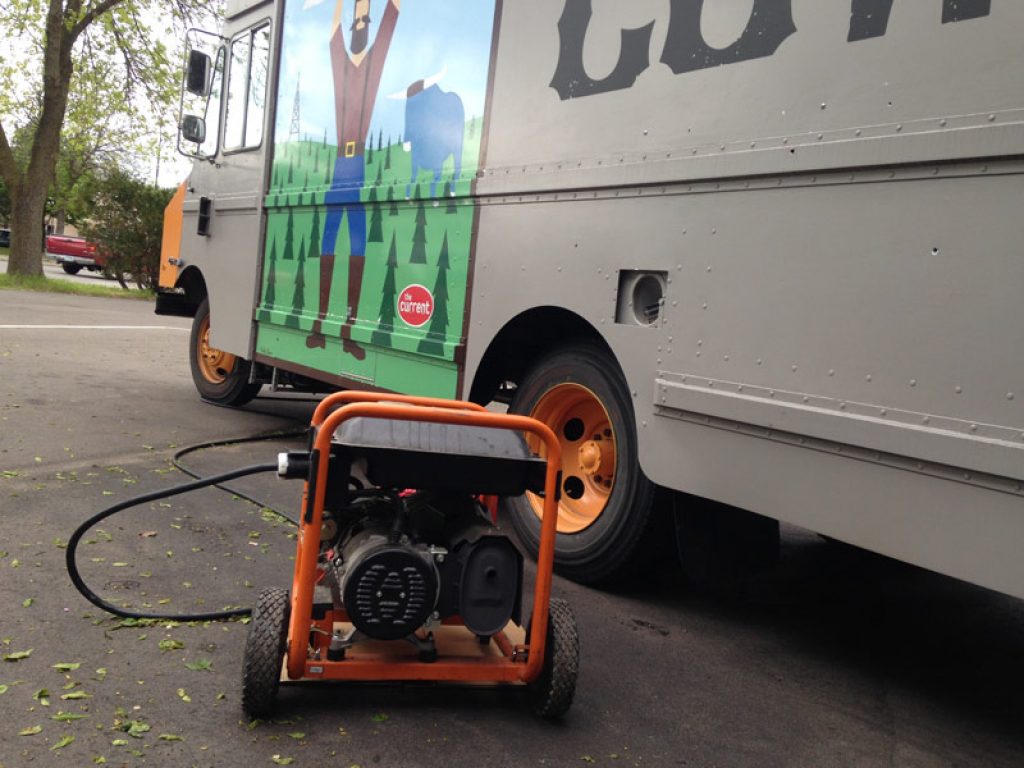
Food trucks also tend to have a lot of motor-driven and power-hungry appliances like refrigerators, air conditioners, microwaves, and electric stovetops that require a generator that can handle power surges and consistently high power outputs. Another important consideration is that your generator needs to run for as long as your truck is open for business, which means you may be running the generator without pause for hours at a time.
All of these challenges combine to require a generator that is powerful, yet quiet, and compact but boasts a large fuel reservoir. Not every generator is built to suit the demands of powering a food, which is why it is so important to look specifically for generators that can handle the requirements of this environment.
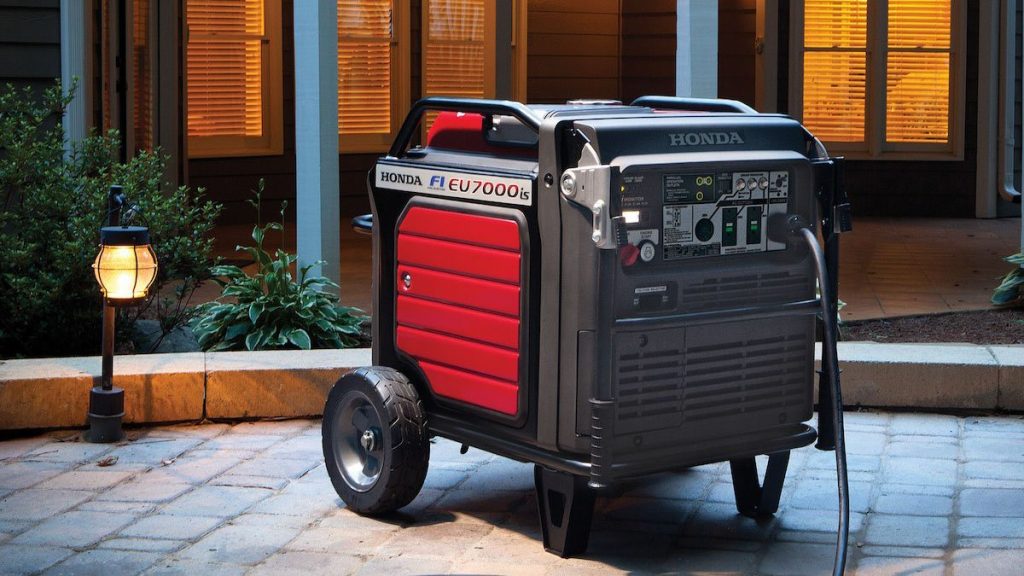
The number one thing you need to consider when choosing a generator for your food truck is how much power, measured in wattage, that you’ll need. The way to figure this out is to add up the wattage of all the electrical appliances you plan to run on the generator – this sum is the number of continuous watts that you will draw.
Note that the closer your power draw is to the maximum running capacity of your generator, the faster you’ll burn through fuel.
The generators we reviewed range from 3,500 watts of running power on the Pulsar model to 9,500 watts on the DuroMax model.
It’s also important to consider the additional power that motor-driven appliances, like refrigerators, freezers, and air conditioning units, draw when first starting up. Most generators are able to support an increased load, known as the surge power, for some time to help motor-driven appliances get started. You’ll need to make sure that the sum of everything that you have plugged into the generator already plus the surge wattage of your motor-driven appliances is less than the surge power rating, or maximum power output, of your generator. Typically, generators with higher continuous power also have higher surge power outputs – thus, the DuroMax generator offers the highest surge power of any generator we reviewed at 12,000 watts.

The primary advantage to gasoline is that it produces greater wattage than propane, which is especially noticeable on dual-fuel generators. In addition, gasoline is easily attainable and you can refill your generator at the same time as you refill your food truck’s tank. For these reasons, gasoline-powered and dual-fuel generators are typically better options for food trucks than propane-only generators.
On the other hand, gasoline is more expensive than propane and can be more difficult to store inside your food truck, since it almost always produces some fumes. Another reason that propane is advantageous is that the runtime of gasoline-fueled generators is limited by the size of their reservoir – the generator must be turned off and cooled down before adding more gas.
With propane, it is possible to hook up your propane tanks such that a second tank takes over after the first tank is exhausted so that there is no downtime to your power supply.
The engine is the heart of any generator and it directly affects the amount of power that a generator will be able to output. For example, the 457cc engine on the DuroMax generator is the largest engine volume of any generator we reviewed, and that model correspondingly has the highest rated power output.
Another thing to think about when looking at generator engines is whether they are two-stroke or four-stroke. Four-stroke engines, like those found on the Pulsar and Westinghouse generators, will typically be slightly quieter and more fuel efficient than their two-stroke cousins.

Note that runtime is determined not only by reservoir size, but also by fuel efficiency and power draw. More fuel-efficient engines will boast longer runtimes for the same amount of fuel, which is why the Honda and Pulsar generators have impressively long runtimes with relatively modest fuel tanks.
In addition, note that runtimes are measured as quarter- or half-load runtimes – the closer your power draw is to the rated capacity of your generator, the more quickly you will burn through fuel.
Making sure that you have all of the outlets you may need for your appliances is also an important component of choosing a generator for your food truck. Some heavy-duty appliances require 240V locking outlets or 30A outlets rather than the standard 120V-20A household outlets that are found on nearly every generator. In addition, consider whether you need USB charging ports built into your generator or whether you need a 12V DC outlet for charging batteries.
Noise is another important consideration when choosing a food truck because it can dramatically affect whether your food truck is a pleasant environment for customers. You need to be able to communicate with your customers to take orders and, if you offer seating, your customers will want to be able to talk with their friends over food. Noise levels on generators can range widely, from just 52 dB on the Westinghouse generator to more than 70 dB on the DuroMax generator.
Note that noise will also increase as the power draw from your generator increases and running dual-fuel generators on gasoline will typically be louder than running them on propane.
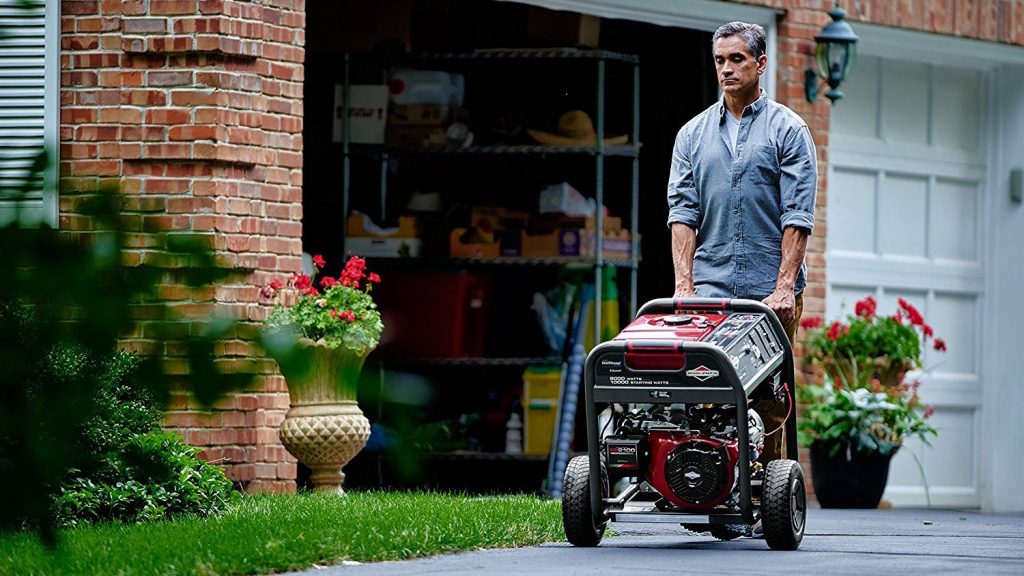
A generator is a major investment in your business, so you want to be sure it will last. Generators typically come with manufacturers’ warranties, although these are often just one year for commercial use. The rare exception on our list is the Honda generator with its three-year commercial warranty.
The most important tips we can give for using your generator are about maintaining it and using it safely.
If you want to keep your generator running for years to come, it is extremely important to maintain it. This means keeping your oil fresh and full and not leaving gas inside the fuel reservoir for extended periods.
Another important tip is to let the generator cool down fully before adding more gasoline to the reservoir. Adding gas when the generator is still hot can cause sparks, which is extremely unsafe.
Unfortunately, you should expect to invest a fair amount of money for a quality generator for your food truck. More powerful generators are typically more expensive and can easily run over $1,000, while generators from vaunted engine companies like Honda can cost several thousands of dollars. The least expensive generator we reviewed, from Pulsar, costs $850.
Our three overall favorite generators for food trucks on the market today are the Honda EU7000iS, the Westinghouse iGen4500, and the DuroMax XP12000EH. The DuroMax generator is the ideal choice for massive food trucks that need to power multiple refrigerators, freezers, microwaves, and more thanks to its massive 9,000-watt running output on gasoline. For food trucks with nearby seating that want to create a more pleasant environment for their customers, both the Honda and Westinghouse generators produce well below 60 dB of noise. The Westinghouse also has an imazing 18-hour runtime at 25% load, which is advantageous for food truck owners worried about the cost of gasoline or limited generator runtimes. We feel the Honda generator is the overall best generator for food trucks thanks to its extraordinarily reliable Honda engine, high fuel efficiency, and long 18-hour runtime. It is also the only generator we reviewed to come with a three-year commercial warranty.
